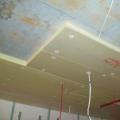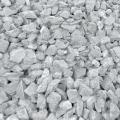How to make a simple foam cutter with your own hands: detailed manufacturing instructions
Polystyrene foam is a durable, lightweight and very good thermal insulation material. It is very easy to work with it. But there are some nuances in working with this material.
Since it is made in the form of large slabs, it is very often necessary to resort to cutting them. This can be done using a regular knife, but no matter how carefully you try to do it, it will not work.
And all because mechanical impact will disrupt the structure of the foam. That is why experts recommend using only a cutter or, as it is also called, a foam cutter for such actions.
You can, of course, buy such a multifunctional tool, but if you make it yourself, you can adapt it to your needs and, of course, save money.
If you plan to work with a cutter for industrial purposes, then it is still better to buy an electrical device that will be designed for large and frequent loads.
How to do it yourself
 The need for a cutter can arise at any time if you do some household chores quite often. Perhaps someone has encountered the need to make a part using a special mold for casting with epoxy resin.
The need for a cutter can arise at any time if you do some household chores quite often. Perhaps someone has encountered the need to make a part using a special mold for casting with epoxy resin.
And to do this, you will need a piece of foam. For example, you can use foam from TV packaging. It is necessary to draw on it using a ruler, compass and ballpoint pen the places where holes will need to be made in the future.
This is where the need for an electric cutter comes into play. After all, it will be difficult to perform this action without spoiling the foam sheet without such a tool. Let's consider one of the options on how to make a device of this type at home.
A homemade cutting device can be of various designs. It is on it and the type of cutting that will depend on how exactly the cutter copes with its goals.
Species
Before you start making a cutter, you should decide for what purpose you need it, because depending on the purposes, they are divided into several groups:
- with metal work plate;
- for linear cutting;
- for shape cutting.
Stages of creation
Since linear cutting is the most common, let's look at this option in more detail:
- Cutting part. To do this you will need nichrome wire, approximately a spiral with a diameter of 0.6 mm. It can be taken from old electric stoves or other heating electrical appliances. The length of such a wire should be 14 cm (its resistance will be 2 ohms).
- Transformer application. For everything to be correct, the first step is to calculate the voltage and current for heating the cutting part. This can be done using the formula - Ohm's law I=U/R. Thus, you can determine the power of the power transformer.
- Making a cutter. The base can be made of any metal, but its length must be at least 11 cm. Next, an insulator - a PCB plate - must be attached to the end. Now fasten the contact groups along the edges of the plate; they can be removed from the electrical outlet. It is into these contacts that it will be possible to attach spirals of different shapes.
- How does the cutter work? After the cutter is plugged in, the wire will heat up and become slightly reddish in color. This is exactly what matters, since a heated cutter will make it possible to easily and quickly cut foam plastic, which will not peel off.
Important to know: Having received such a device, in just three minutes it will be possible to cut the required shape from a sheet of foam plastic.
Be sure to follow all safety rules so as not to injure yourself and others. After all, the power of the cutter is enough to damage any part of the body during operation. And connecting to electricity further increases the risk of injury.
Step-by-step production of a thermal cutter
 You can make a thermal cutter using a burner or soldering iron and an old jigsaw. Let's consider the manufacture of such a device step by step:
You can make a thermal cutter using a burner or soldering iron and an old jigsaw. Let's consider the manufacture of such a device step by step:
- Sleeve. Initially, you need to make the main and most difficult thing - the bushing. So, to do this, the plate must be bent and turned. Next, you need to make a hole in the sleeve; the thread will be inserted there in the future.
- Burner. You need to cut off the wire that leads to the hole, take suitable connectors, and then solder them to the break point.
Please note: Such areas must be isolated.
- After everything is done, you can connect the thermal cutter. Cut an old jigsaw in half. A pre-prepared claw plate must be attached to the upper part with screws. But we attach the bottom to the base using self-tapping screws.
- Insert the sleeve into the foot. Now, with special attention, you need to use a plumb line or a square to mark the point under the hole of the sleeve from the hole. Next, drill a hole in the base. The diameter of the hole in the base should be about 5 mm.
- Thermal cutting machine So, when everything is ready, you need to straighten the nichrome wire. To do this, you should turn on the burner at full power and touch the nichrome with the wires from it. Everything must be done in such a way that there is a distance between the wires equal to the height of the device. If the thread does not heat up, but the burner begins to hum, find a thinner wire. This is necessary because the one you selected does not have enough resistance.
Take note: nichrome should be hot, but should not get red hot. If the string turns red, you need to reduce its heating using the regulator. In the event that the nichrome is red even at a minimum, then a compensator should be left 5-10-15 cm above the spring of nichrome wire. And only after that you can make contact.
- Operation of the device. With a pre-installed guide, you need to cut foam dies to a given thickness, or you can make the shape curly.
Application
 If you are making repairs or doing wood cutting, or you need to cut a piece of plywood, then an electric cutter will be very useful for you, which can also be used even for cutting thick fabric.
If you are making repairs or doing wood cutting, or you need to cut a piece of plywood, then an electric cutter will be very useful for you, which can also be used even for cutting thick fabric.
If you think that for all of the above actions you will only need to use a thermal knife, or a hacksaw will suffice, then you are mistaken.
After all, a hacksaw will not make the edges smooth and not torn, as is the case with a cutter.
 Construction materials and list of works
Construction materials and list of works Proper insulation of a wooden ceiling in a private house
Proper insulation of a wooden ceiling in a private house What types of crushed stone are there?
What types of crushed stone are there?